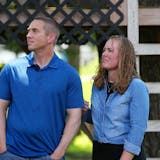If Minnesota’s judicial candidates have a singular message to voters, it’s that they should flip their ballots Tuesday to choose judges and justices in the nonpartisan contests across the state.
Judges face more restrictions when campaigning than other candidates for public office. They don’t run with partisan endorsements or support. They can’t ask individuals for money and can’t state their positions on legal issues or coordinate campaigns.
Former state Supreme Court Justice David Lillehaug knows the conundrum because he stood for election statewide in 2014 before returning to private practice in 2020. He cited two main obstacles to running as a judge, especially statewide: time and money.
State restrictions eliminate the most effective means of fundraising — dialing for dollars by the candidate, the former justice said. Generally, statewide judicial campaigns raise about $250,000, a relatively paltry sum that provides just enough for internet or newspaper ads, but not for far-reaching radio or television.
“As a consequence of the lack of money your options for campaigning other than personal appearances are very limited,” Lillehaug said.
Judicial candidates attend many meet-and-greet receptions, often at big law firms, where they talk about their backgrounds. The candidates depart when donations are encouraged, leaving that task to campaign chairs and volunteers who are usually well-known lawyers.
Rules state that judicial candidates cannot discuss pending cases or issues. “Most incumbent judges and justices honor that scrupulously,” Lillehaug said.
Minnesota Supreme Court Chief Justice Natalie Hudson is on the ballot with an opponent, Stephen Emery, who has run for multiple offices. Justice Anne McKeig is on the ballot without opposition.



